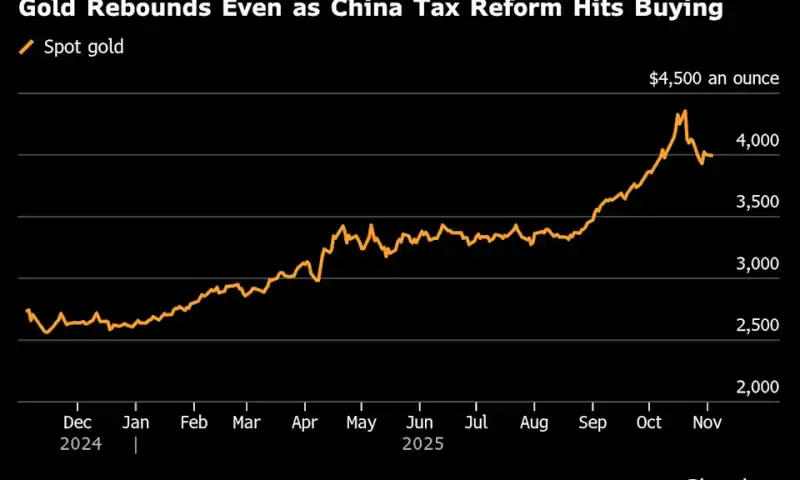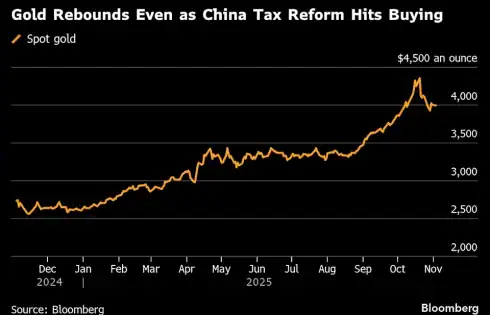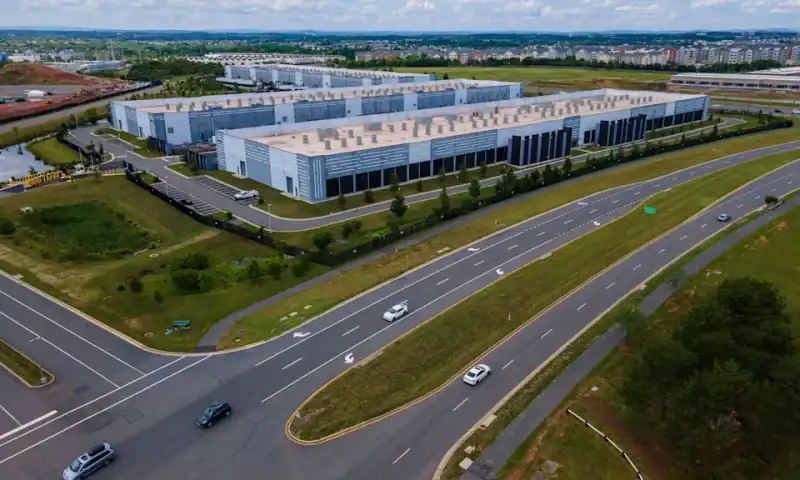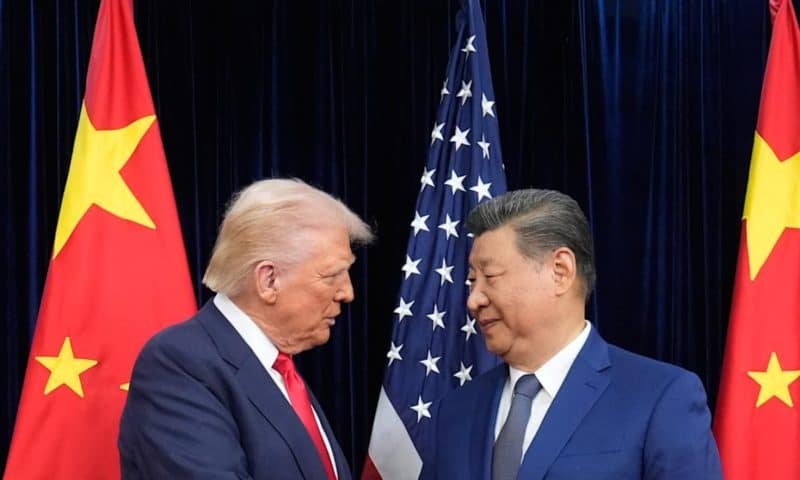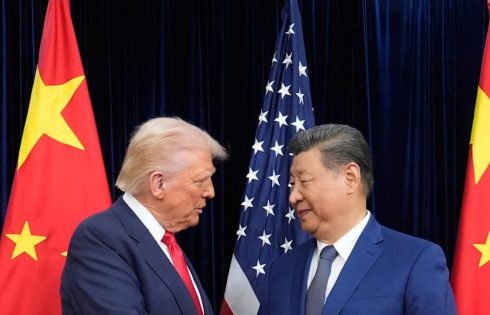
(Bloomberg) — Ask Rick Woldenberg why he’s challenging President Donald Trump’s tariffs at the US Supreme Court, and he might mention a furry unicorn yoga ball.
Woldenberg, who runs two educational-toy businesses near Chicago, says the BubblePlush Yoga Ball Buddies, designed to help kids control their emotions, has been hit especially hard by Trump’s fluctuating global tariffs.
The BubblePlush, which also comes as a penguin or puppy, was slated to be made in China. But when Trump jacked up tariff rates to 145% on imports from that country in April, Woldenberg’s team scrambled to shift production to India, only to see Trump reduce the China duties and slap higher ones on India imports. The company rushed to have the goods arrive before the 50% India tariff took effect, but the shipment arrived six hours too late.
“We paid a $50,000 penalty for that,” Woldenberg said from a toy-festooned conference room in Vernon Hills, Illinois. “We’re sort of like itinerant refugees in how we make our products. We go from jurisdiction to jurisdiction, and no matter what we guess, it seems like it’s wrong.”
Woldenberg’s companies — Learning Resources Inc. and hand2mind Inc. — sued in April to invalidate the tariffs as exceeding Trump’s authority. The suit is now before the Supreme Court in one of the most economically important clashes in the country’s history. In arguments Wednesday, the court will consider striking down most of the tariffs Trump has imposed since taking office, potentially affecting trillions of dollars in trade. A ruling against Trump would undercut his ability to use tariffs as an all-purpose tool to wring concessions out of trading partners and could mean refunds exceeding $100 billion.
More broadly, the case marks a pivotal moment as Trump asserts powers well beyond those claimed by his White House predecessors. Although the conservative-controlled Supreme Court has largely accommodated Trump this year, it’s done so only through preliminary decisions. A tariff ruling favoring Trump could set a far-reaching precedent letting presidents take unilateral actions in the name of addressing an emergency.
“THE MOST IMPORTANT CASE EVER IS IN THE UNITED STATES SUPREME COURT,” Trump said Oct. 24 on social media.
Should the tariffs be struck down, small and mid-sized companies will be able to claim credit. The court is also considering separate cases pressed by five other closely held businesses and 12 states with Democratic attorneys general. Hundreds of other small companies have weighed in against the tariffs, most through the We Pay the Tariffs coalition.
Nowhere to be found are the companies paying the biggest sums. Although the US Chamber of Commerce opposes the tariffs, major importers like General Motors Co. and Walmart Inc. are keeping their names off the case.
“I was shocked that those with much more power and money did not step up,” said Victor Schwartz, president of V.O.S. Selections Inc., a New York-based wine importer helping press the other small-business suit.
Woldenberg says he’s happy to play a leading role amid his estimated $20-30 million tariff bill this year – far above last year’s $2.3 million. He says the companies have raised their prices “middle single digits” to recoup some of the cost. He says he sued after other companies that were considering pressing a case dropped out.
Woldenberg says he expects to incur millions of dollars in legal bills even after accepting contributions from unnamed outsiders. He says he won’t take help from non-Americans or anyone with political affiliations. “I am not a front for anyone else,” he said.
Trump has offered an array of rationales for his tariffs, saying at various times they will raise revenue, open up foreign markets and bring manufacturing jobs back to the US. He has wielded tariffs to try to get Canada and Mexico to crack down on illegal immigration, Brazil to drop the prosecution of ex-President Jair Bolsonaro, and India to stop buying Russian oil.
Defenders say Trump’s tariffs will strengthen the country over the long term. “When taken all together, it clearly is a net benefit for our country and for American workers,” said Jill Homan, deputy director of trade and economic policy at the pro-Trump America First Policy Institute.
Woldenberg begs to differ. Although the vast majority of his products are manufactured overseas, he calls that a longstanding industry practice reflecting lower labor costs abroad. Meanwhile the two companies, founded separately by his father and mother, have grown to employ 500 workers, with sales topping $250 million annually.
Woldenberg, 65, beamed with pride recently as he watched boxes flow along a maze of conveyor belts in Learning Resources’ 356,000-square-foot warehouse, using bar codes and a handful of workers to get spelling games, building sets and microscopes to their proper destinations. The four-year-old warehouse cost more than $40 million to construct, he said.
“Evil companies making products overseas, don’t invest in America,” he said, caricaturing pro-tariff arguments. “I’m sorry, but that does not cut it with me. This was not free, and this is technology, and most of this came from the United States, and these people that are working here are American.”
The tariffs are also taking a toll on much smaller companies, says David Levi, whose Virginia-based MicroKits LLC is also challenging the tariffs. Levi, whose business makes educational electronic kits and musical instruments, says he’s had to cut back the hours of his part-time employee – and raise his prices.
“I’ve just been passing on most of the costs because I need to have the cash flow to continue to buy more parts,” Levi said.
White House spokesman Kush Desai said the tariffs “have already helped secure multiple trade deals that level the playing field for American workers and industries and are securing trillions in investments to make and hire in America.”
The court will decide the fate of Trump’s April 2 “Liberation Day” tariffs, which impose levies of 10-50% on most imports depending on the originating country, as well as separate duties Trump imposed on Canada, Mexico and China in the name of addressing fentanyl trafficking.
Trump says the tariffs are authorized by the 1977 International Emergency Economic Powers Act, which gives the president a panoply of tools to address national security, foreign policy and economic emergencies. Administration lawyers say the national trade deficit and the fentanyl crisis each constitutes an emergency that lets the president invoke the law.
“To the president, these cases present a stark choice: With tariffs, we are a rich nation; without tariffs, we are a poor nation,” Solicitor General D. John Sauer argued in court papers.
Opponents say that, even if those were legitimate emergencies, the 1977 law doesn’t authorize tariffs, a power the Constitution vests with Congress. The measure doesn’t mention tariffs or taxes, though a key provision says the president can “regulate” the “importation” of property to address an emergency.
The president “has no power to impose taxes on American citizens without the authorization of Congress,” said Michael McConnell, a Stanford Law School professor and former federal appeals court judge who represents the other small businesses that are suing. “And tariffs are taxes on American importers.”
Should Trump lose, administration officials say most of the levies could be imposed using other, more complicated legal tools. Trump’s tariffs on steel, aluminum and automobiles were put in place under a different law, so are not directly affected.
“We do have backup plans and the president’s trade team is working diligently on those contingency plans,’’ White House Press Secretary Karoline Leavitt said on on Fox News. “The importance of this case cannot be overstated. The president must have the emergency authority to utilize tariffs.”
Trump told reporters on Sunday he doesn’t think he will attend the oral arguments, reversing himself after suggesting in mid-October that he might watch the proceedings in person.
“I just don’t want to do anything to deflect the importance of that decision,” he said. “It’s not about me, it’s about our country.”
One person who will be there is Woldenberg, a onetime corporate lawyer who will be attending his first Supreme Court argument.
“I don’t personally tell myself I’m taking on Donald Trump,” Woldenberg said. “I’m advocating for myself, I’m advocating for people who depend on our company, and I think I’m talking about issues that are important to every American.”
 The US Supreme Court on Wednesday considered the legality of President Trump’s global tariffs, where a majority of the justices — both the court’s three liberal-leaning justices, as well as three more conservative ones — offered skeptical questions regarding the president’s authority to impose his most sweeping duties.
The court, which has a 6-3 conservative majority, has previously backed Trump in a series of decisions this year. But justices appeared skeptical of the president’s authority, casting doubt over the centerpiece of Trump’s second-term economic agenda.
“What would prohibit Congress from just abdicating all responsibility to regulate foreign commerce — for that matter, declare war — to the president?” Justice Neil Gorsuch, who was appointed to the high court by Trump, asked the US government’s lawyer.
As Yahoo Finance correspondent Ben Werschkul has detailed, experts are split on the ultimate verdict the court will hand down. In any case, the outcome will offer significant ramifications for the global economy and its businesses and consumers.
Trump, meanwhile, has made clear he considers the case to be of paramount importance to his legacy, even as his administration touts the other legal avenues he could use to impose the duties.
Trump on Tuesday said the case is “literally LIFE OR DEATH for our country.”
The US Supreme Court on Wednesday considered the legality of President Trump’s global tariffs, where a majority of the justices — both the court’s three liberal-leaning justices, as well as three more conservative ones — offered skeptical questions regarding the president’s authority to impose his most sweeping duties.
The court, which has a 6-3 conservative majority, has previously backed Trump in a series of decisions this year. But justices appeared skeptical of the president’s authority, casting doubt over the centerpiece of Trump’s second-term economic agenda.
“What would prohibit Congress from just abdicating all responsibility to regulate foreign commerce — for that matter, declare war — to the president?” Justice Neil Gorsuch, who was appointed to the high court by Trump, asked the US government’s lawyer.
As Yahoo Finance correspondent Ben Werschkul has detailed, experts are split on the ultimate verdict the court will hand down. In any case, the outcome will offer significant ramifications for the global economy and its businesses and consumers.
Trump, meanwhile, has made clear he considers the case to be of paramount importance to his legacy, even as his administration touts the other legal avenues he could use to impose the duties.
Trump on Tuesday said the case is “literally LIFE OR DEATH for our country.”







 Shares of Upwork (NASDAQ: UPWK) leaped 13% on Tuesday after the freelance marketplace delivered an upbeat third-quarter financial report.
Shares of Upwork (NASDAQ: UPWK) leaped 13% on Tuesday after the freelance marketplace delivered an upbeat third-quarter financial report.


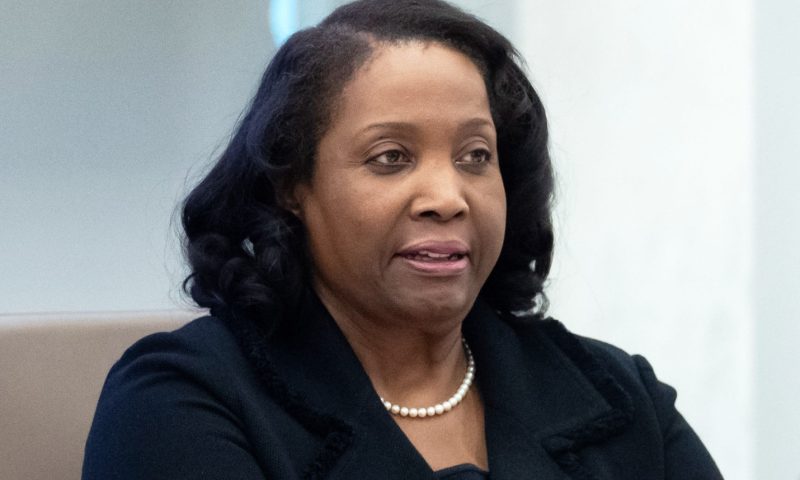
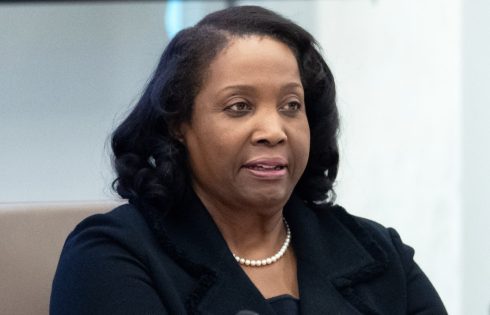 Chicago Federal Reserve president Austan Goolsbee said he is undecided about whether to cut interest rates again in December.
The threshold for cutting again is higher, he said, given inflation concerns and lack of official economic data.
“I’m not decided going into the December meeting,” Goolsbee told Yahoo Finance in an interview Monday. “I am nervous about the inflation side of the ledger, where you’ve seen inflation above the target for 4.5 years and it’s trending the wrong way.”
Goolsbee, who voted alongside other officials to cut rates by a quarter percentage point to a new range of 3.75% to 4%, said he had penciled in two rate cuts for this year, which have now happened. He said he remains worried about “front-loading rate cuts,” noting that core inflation over the past three months has been running at 3.6% on an annualized basis, while core services inflation has been closer to 4% for the same period. The Fed has an inflation target of 2%.
“That’s worrying because that’s going the wrong way,” he said. “If we’re just counting on that to go away because it’s transitory, that makes me uneasy.”
On the labor market side, Goolsbee said he sees stability in the unemployment rate, which stands at 4.3%, and other measures that are less affected by population changes or immigration policy.
“If you look over the last 12 months, the unemployment rate has not been going up,” he said.
Goolsbee added, “If the job market starts to deteriorate in a more significant way, then that would change the balance of risk.”
Federal Reserve governor Lisa Cook and San Francisco Fed president Mary Daly echoed similar sentiments in separate speeches on Monday.
“Looking ahead, policy is not on a predetermined path,” Cook said in a speech at the Brookings Institution in Washington, D.C. “Every meeting, including December’s, is a live meeting.”
“I thought it was appropriate to take another bit off the policy rate,” Daly said, speaking at Forum Club of the Palm Beaches in Florida. “We need to continue to put downward pressure on inflation and keep our policy modestly restrictive, but not hold the reins so tight that we injure the labor market unnecessarily and give people lower inflation but fewer jobs. So that was a balanced decision.”
All three acknowledged the challenge of setting policy amid a data blackout.
Chicago Federal Reserve president Austan Goolsbee said he is undecided about whether to cut interest rates again in December.
The threshold for cutting again is higher, he said, given inflation concerns and lack of official economic data.
“I’m not decided going into the December meeting,” Goolsbee told Yahoo Finance in an interview Monday. “I am nervous about the inflation side of the ledger, where you’ve seen inflation above the target for 4.5 years and it’s trending the wrong way.”
Goolsbee, who voted alongside other officials to cut rates by a quarter percentage point to a new range of 3.75% to 4%, said he had penciled in two rate cuts for this year, which have now happened. He said he remains worried about “front-loading rate cuts,” noting that core inflation over the past three months has been running at 3.6% on an annualized basis, while core services inflation has been closer to 4% for the same period. The Fed has an inflation target of 2%.
“That’s worrying because that’s going the wrong way,” he said. “If we’re just counting on that to go away because it’s transitory, that makes me uneasy.”
On the labor market side, Goolsbee said he sees stability in the unemployment rate, which stands at 4.3%, and other measures that are less affected by population changes or immigration policy.
“If you look over the last 12 months, the unemployment rate has not been going up,” he said.
Goolsbee added, “If the job market starts to deteriorate in a more significant way, then that would change the balance of risk.”
Federal Reserve governor Lisa Cook and San Francisco Fed president Mary Daly echoed similar sentiments in separate speeches on Monday.
“Looking ahead, policy is not on a predetermined path,” Cook said in a speech at the Brookings Institution in Washington, D.C. “Every meeting, including December’s, is a live meeting.”
“I thought it was appropriate to take another bit off the policy rate,” Daly said, speaking at Forum Club of the Palm Beaches in Florida. “We need to continue to put downward pressure on inflation and keep our policy modestly restrictive, but not hold the reins so tight that we injure the labor market unnecessarily and give people lower inflation but fewer jobs. So that was a balanced decision.”
All three acknowledged the challenge of setting policy amid a data blackout.


